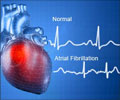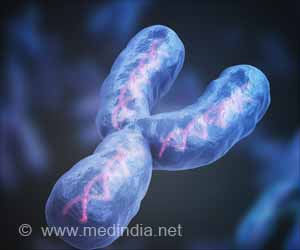Controlling the timing of electrical pulses means they don't need to be as powerful and won't do as much damage as conventional defibrillators.

The study provides early evidence that one theorized approach to controlling fibrillations – adaptive deceleration pacing – can improve the performance of defibrillators.
"In numerical simulations, we investigate how the dynamics of chaotic electrical excitation waves, which govern the dynamics of the heart during fibrillations, can be controlled more efficiently," said author Thomas Lilienkamp. "Our goal is to use numerical simulations to find control strategies that avoid the application of high-energy shocks and that can also be tested in experimental setups and eventually on patients to reduce side effects."
Adaptive deceleration pacing uses a series of weak pulses that are spaced farther apart over time to respond to the heart and return it to a normal rhythm in a few beats.
Modeling of Atrial and Ventricular Fibrillations
"With our approach, we can develop a pulse sequence specifically designed for a specific patient and even for a specific arrhythmia," Lilienkamp said. "This can be crucial, since even two arrhythmias in the same patient can be different in terms of the underlying dynamics characterized."After starting a chaotic spiral wave form that is characteristic of the arrhythmias in four different heart models, the authors tested their approach using different pulse pacing sequences. The high-dimensional complexity of the dynamics and its dependence on control parameters makes numerical simulations a useful tool for handling such a high volume of calculations.
"In order to investigate and compare the performance of different pulse sequences, a large number of numerical simulations is required. The success rate we use as a benchmark for a specific pulse sequence is a statistical quantity averaged over the result of many single simulations," Lilienkamp said.
Advertisement
The group hopes to continue its work in more complex models and in experimental setups with real cardiac tissue.
Advertisement









